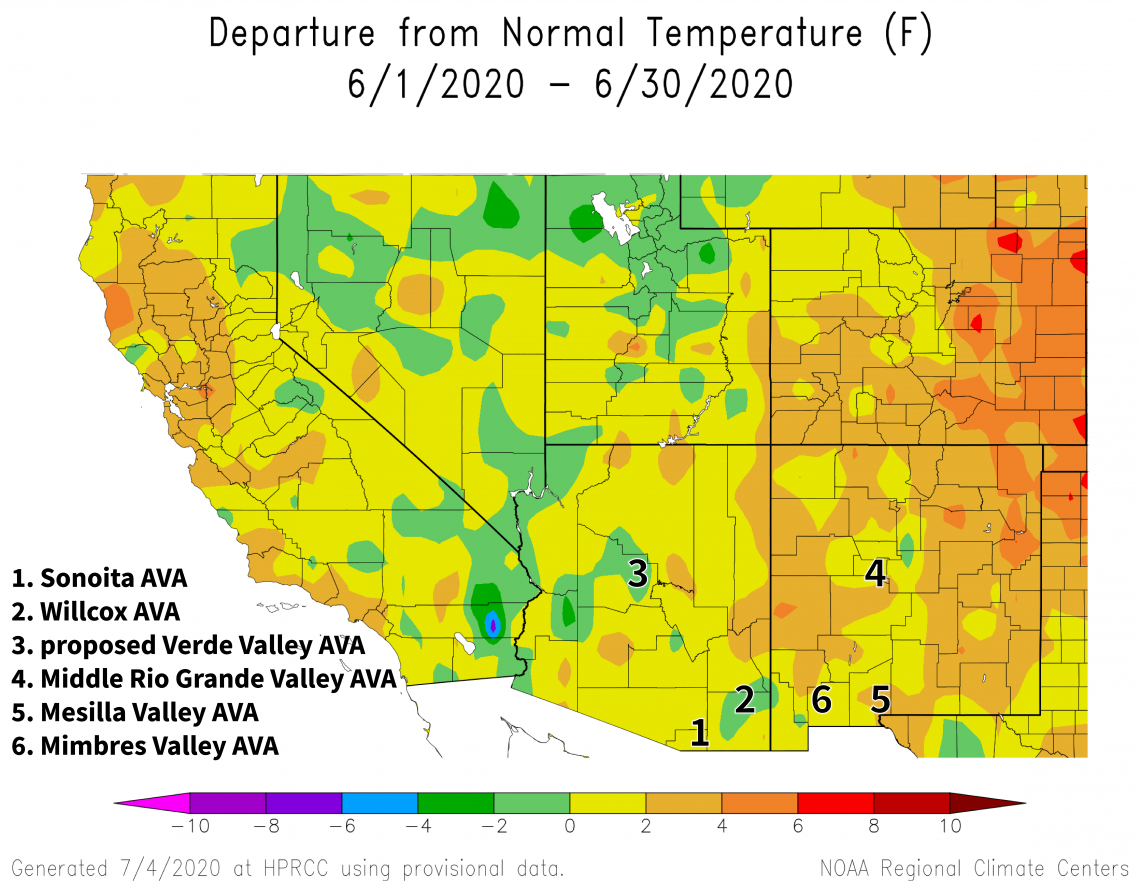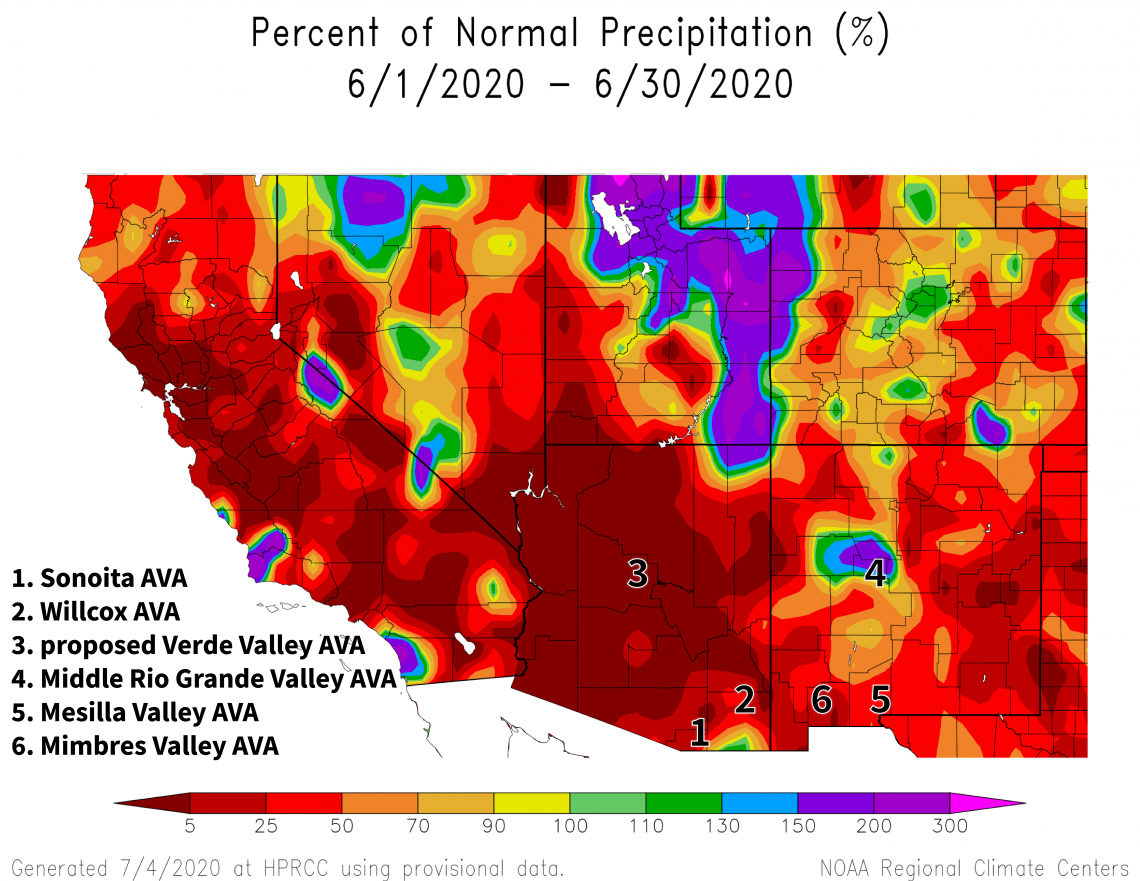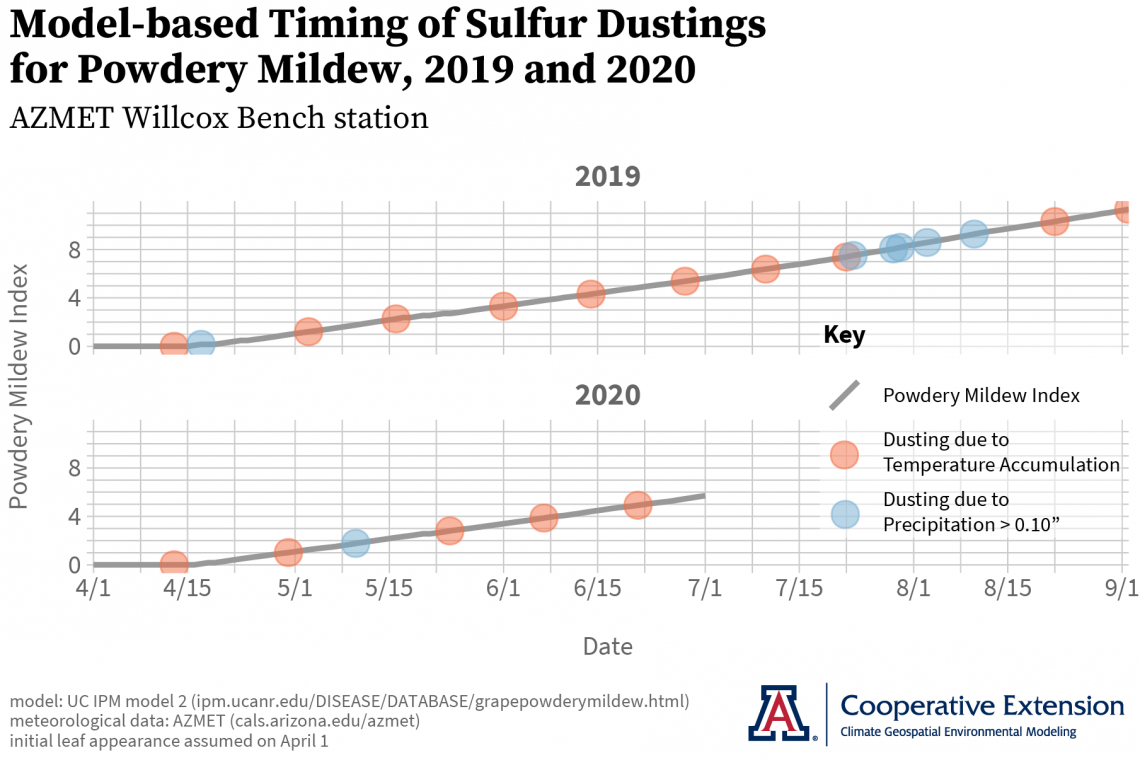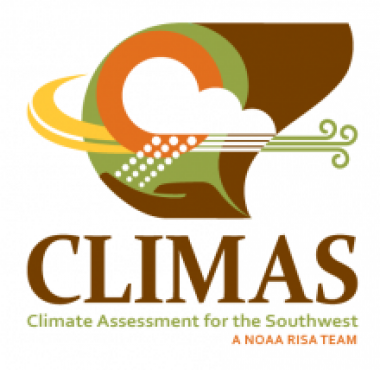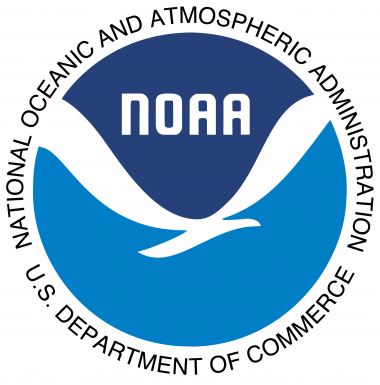Climate Viticulture Newsletter - 2020 July
< Back to Climate Viticulture Newsletter
Hello, everyone!
This is the 2020 July issue of the Climate Viticulture Newsletter – a quick look at some timely climate topics relevant to winegrape growing in Arizona and New Mexico.
A Recap of June Temperature and Precipitation
Average temperatures for the month were near or up to 2°F warmer than the 1981-2010 normal for most of Arizona (yellow areas on map) and 2°F to 4°F warmer for much of New Mexico (light orange areas on map). Especially for vineyards in relatively warmer winegrape growing areas, canopy management can be a way to help vines handle extra heat this time of year. More on this below. As a comparison, June 2019 temperatures were at or slightly below normal.
For the second consecutive month, monthly precipitation totals were less than 50% of normal for almost the entire region (red areas on map). Granted, both May and June are relatively dry, and there is not a lot to gain in terms of soil moisture even under average conditions. But with fewer or no days with precipitation, there may be something to gain in terms of pest management. More on this below. Precipitation totals for June last year were a similar story.
The Outlook for July Temperature and Precipitation
There is a slight to moderate increase in chances for above-average temperatures as one goes from northwest to southeast across the region this month (orange areas on map). Warmer-than-normal temperatures this time of year can slow down phenology in relatively warmer growing areas and speed it up in relatively cooler ones. More on the former and its effect on the timing of veraison below. In July 2019, temperatures were near and above normal for the region.
2020-jul-temp-outlook-noaa-cpc.gif
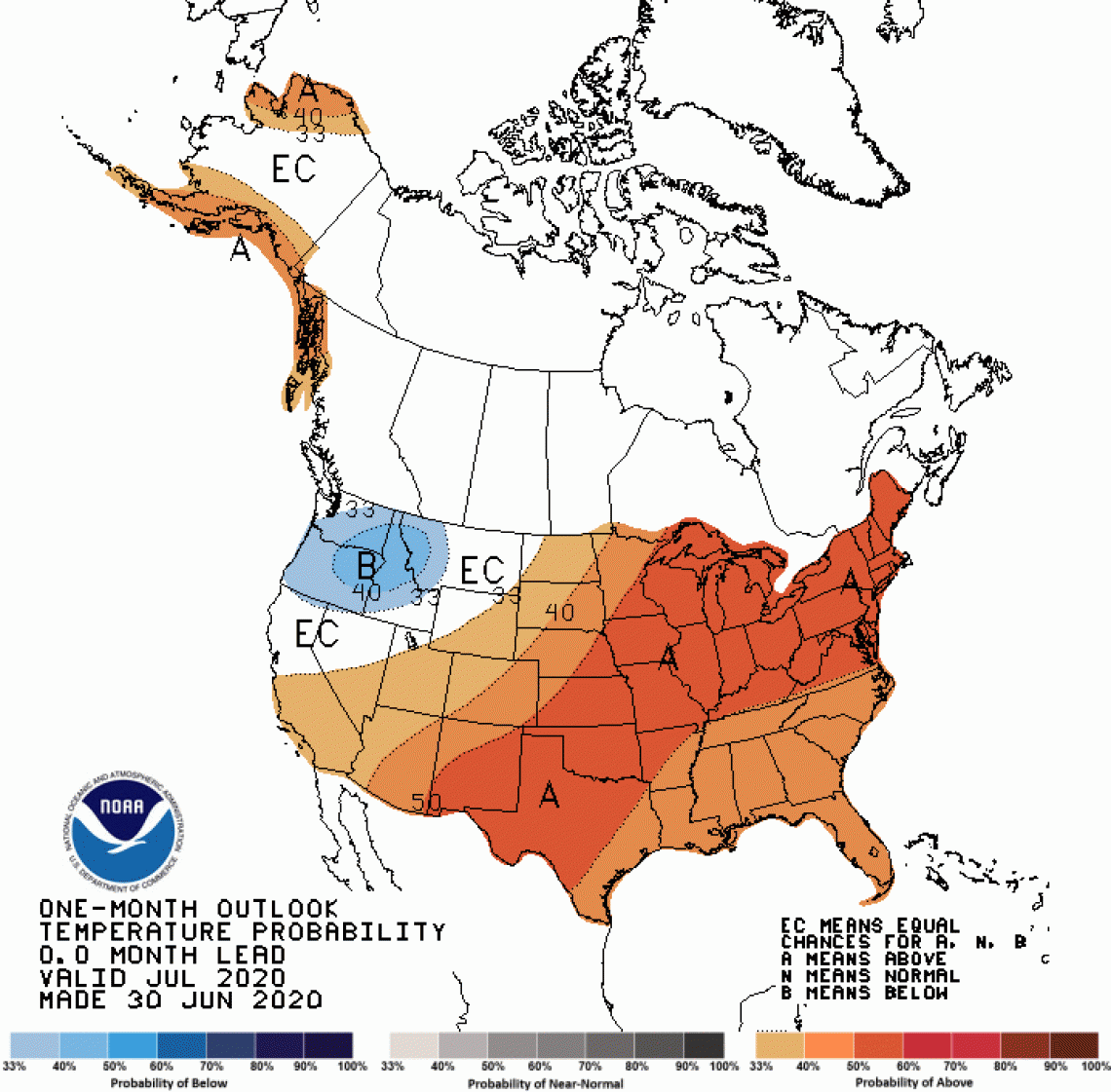
Equal chances for above-, near-, or below-average precipitation totals exist for extreme western Arizona (white area on map), whereas a slight increase in chances for below-normal precipitation covers the rest of the region (tan areas on map). The latter is due to a weak and late start of the monsoon. As we learned at the ‘growing season in review’ workshops last fall, there are both good and bad sides of the monsoon for regional viticulture. Last year, precipitation in July was well below normal for much of the region.
2020-jul-prcp-outlook-noaa-cpc.gif
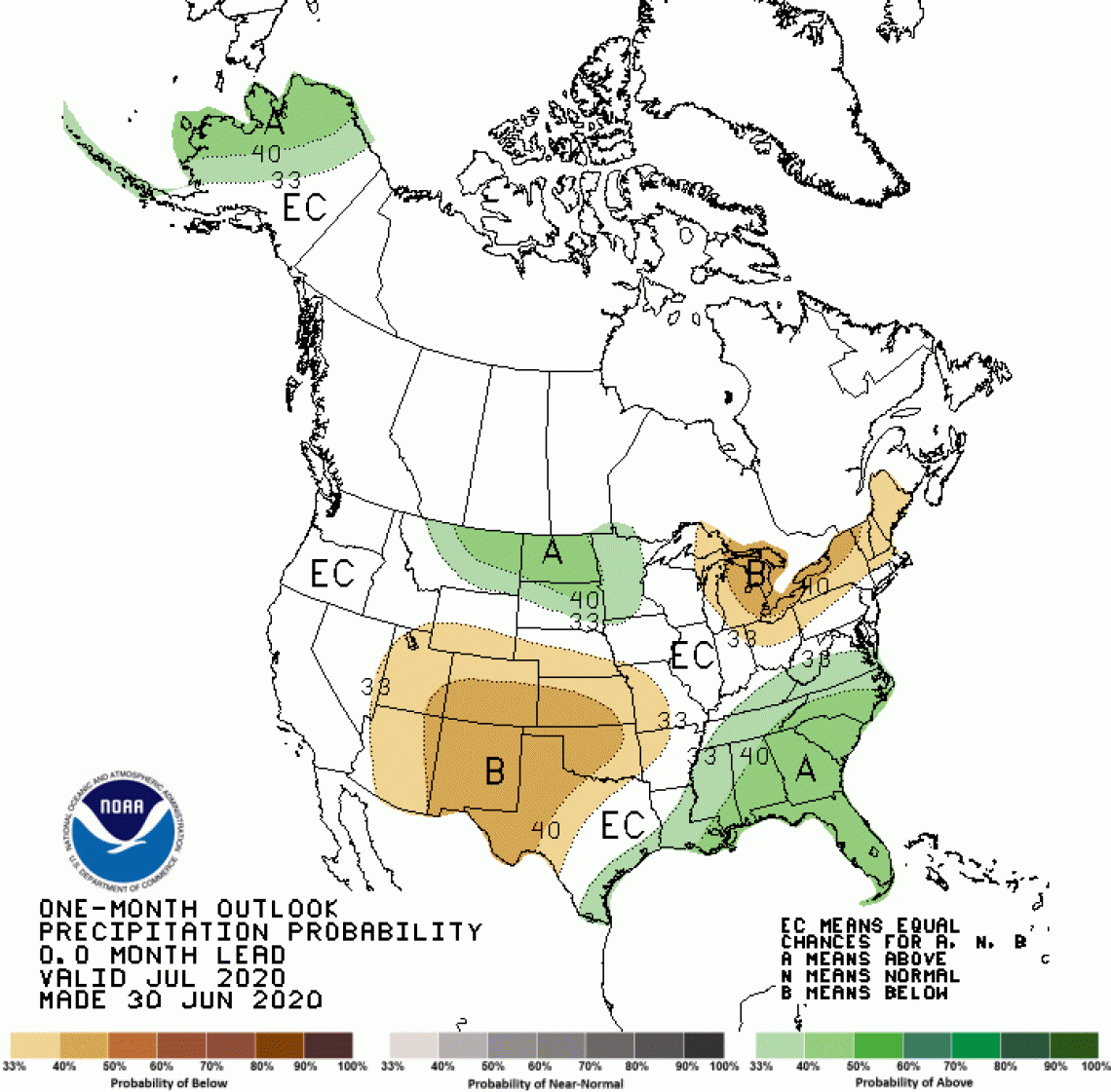
'Tis the (Wildland Fire) Season
A slow start to the monsoon has allowed peak wildland fire season to continue across the region. There is an above-normal potential this month for significant wildland fires for all of Arizona and the western third of New Mexico (red area on map). Otherwise, the potential in the region is near normal (white area on map). Unfortunately, prolonging the wildland fire season increases the relative risk for smoke taint in the warmer growing areas of the region where the ripening period has begun.
2020-jul-month1-fire-outlook.png
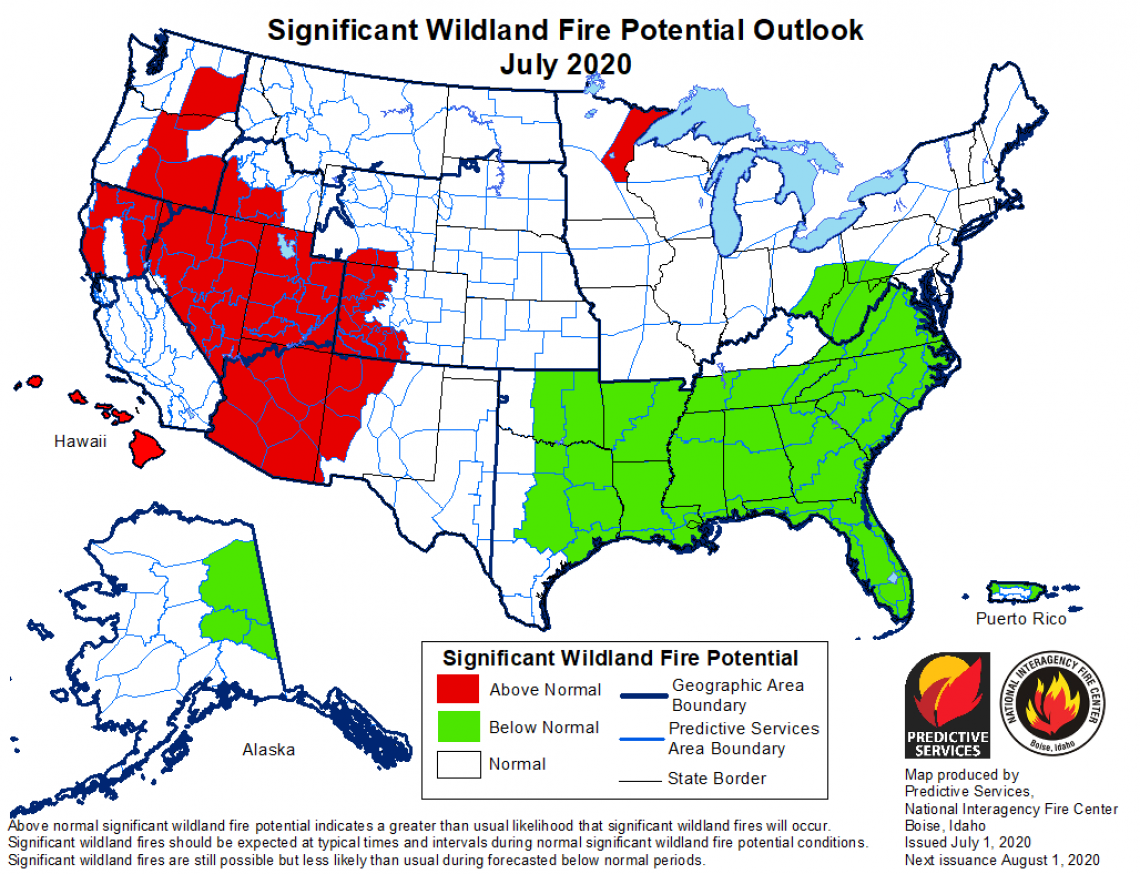
Heat Accumulation So Far This Year
At the Arizona Meteorological (AZMET) Network Willcox Bench station, temperatures last month kept cumulative growing degree days above the level they were at this time last year (pink and purple lines on graph). Based on growing-degree-day information from the National Phenology Network, this also is the case for other locations in the Willcox, Sonoita, and proposed Verde Valley AVAs in Arizona, as well as the Mesilla Valley, Mimbres Valley, and Middle Rio Grande Valley AVAs in New Mexico. Nonetheless, current values at the Willcox Bench station still are less than those at the start of July in 2018 and 2017 (orange and green lines on graph). Timing of vine growth stages near this location now looks to be ahead of last year but behind that of two and three years ago. But, effects of heat stress on phenology are not part of the cumulative growing degree day calculation, which could lead this assessment astray. More on this below. Please let us know how growth stages this year compare to previous ones in your vineyard.
cgdds-azmet-willcox-bench-cvn202007.png
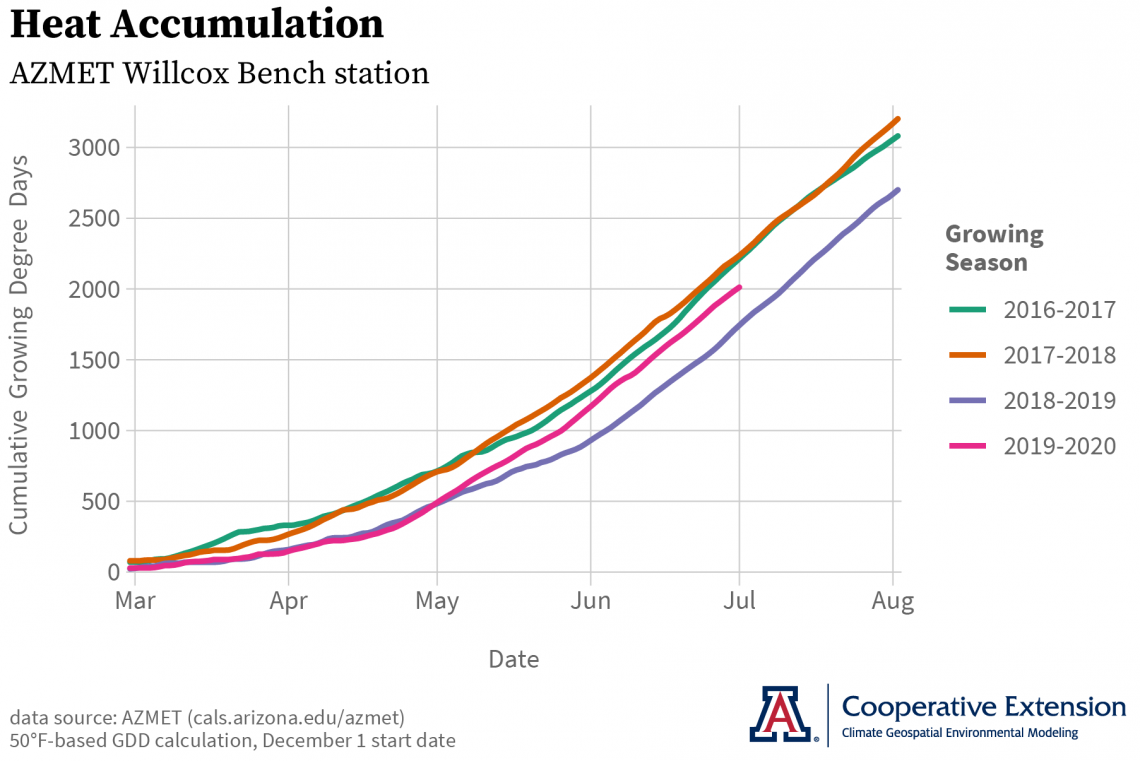
Heat Stress
As noted last month, vine photosynthesis and growth slow down and eventually stop as temperatures rise above 95°F. Related impacts this time of year might include delayed phenology that leads to a later veraison date, as well as damage to shoots, leaves, and bunches, the latter of which highlights a critical role of vine canopy. Such temperatures are a concern for warmer growing areas of the region, like the Mesilla Valley AVA in New Mexico and the Willcox AVA in Arizona. Data from the ZiaMet station at the Fabian Garcia Science Center in Las Cruces, NM and the AZMET Willcox Bench station in southeastern Arizona show three general periods during June when temperatures 95°F and higher occurred (yellow, orange, and red bars on graph). Interestingly, the ‘home climate’ of a variety may be a predictor of how much that variety is affected by high temperatures. Please let us know if any impacts from heat stress occurred in your vineyard, as we work to better understand the effects of this phenomenon in the region.
heat-stress-cvn202007-2020-07-01.png
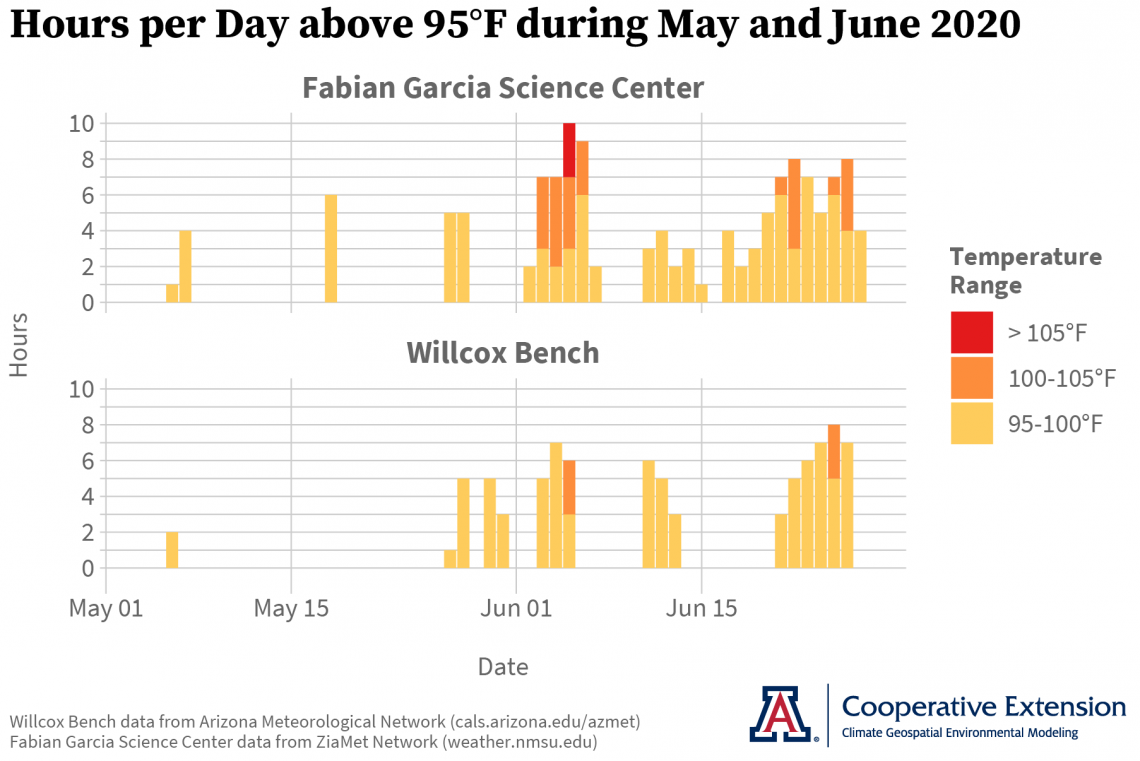
Powdery Mildew Index
As temperature and moisture affect germination, infection, and colony development of powdery mildew, models based on these environmental conditions and that predict timing of sulfur treatments are a tool that can help with the need to control the disease. Based on the Snyder model developed by the Integrated Pest Management program at the University of California, the first recommended dusting is the first of either 12 days after initial leaf appearance or six inches of shoot growth (red dots at April 13th on graph). Subsequent dustings in April, May, and June are mostly driven by temperature and are about two weeks apart (red dots on graph). Dustings due to rainfall greater than 0.10” become predominant in July and August and clearly reflect the seasonal presence of the monsoon (blue dots on graph). This timing scheme continues throughout the growing season until berries contain 12-15% sugar. Please let us know how recommended timing of sulfur applications by the Snyder model compare to powdery mildew treatment in your vineyard.
The most recent forecast for ENSO (El Niño Southern Oscillation) – parts of the atmosphere and ocean across the tropical Pacific Ocean that cause El Niño and La Niña events – puts equal chances on neutral or La Niña conditions happening this fall and winter. These conditions favor near- or below-normal hurricane activity to the west of Mexico and Central America, which may reduce our late-summer and early-autumn precipitation.
Please consider taking this anonymous survey that will help Cooperative Extension better understand the impacts of COVID-19 on Arizona agriculture. Contact Isaac Mpanga, Area Associate Agent in the Verde Valley, for more information.
Isaac Mpanga also is leading a monthly series of remote meetings for commercial horticulture and small-scale farmers to share science-based information on topics like pests, diseases, marketing, and food safety. The goal is to help improve farm productivity, profitability, sustainability, and food security. Please email yavapaipres@cals.arizona.edu to register. The first meeting is July 20.
For those of you in southeastern Arizona, Cooperative Extension manages an email listserv in coordination with the Tucson forecast office of the National Weather Service to provide information in the days leading up to agriculturally important events, like record-high temperatures and critical fire weather conditions. Please contact us if you'd like to sign up.
Please feel free to give us feedback on this issue of the Climate Viticulture Newsletter, suggestions on what to include more or less often, and ideas for new topics.
Did someone forward you this newsletter? Please contact us to subscribe.
Have a wonderful July!
With support from:


